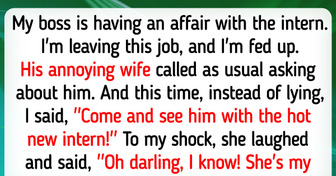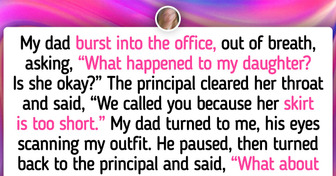15 Companies Who Put Their Customers Ahead of Everything

Nothing brightens a parent’s day more than the laughter of their child. Seeing the joy in their eyes and hearing the giggling sound is music to their ears that no other feeling can beat. However, some experts believe that uncontrollable chuckles are not as entertaining as they seem, especially for the youngster.
The Bright Side team went on a quest to investigate what exactly happens when you tickle a baby or a child and why you shouldn’t do it.
The best judges of whether we should tickle babies are all of us, ex-toddlers. Most of us have at least one unpleasant memory of attempting to stop a tickler but laughing so much that we couldn’t talk. Other times, we kept saying stop repeatedly or tried to flee as the tickler continued.
A prolonged tickling session can speed up the heart rate, fueling the child’s fear of suffocation and causing them to feel hyper-aroused. As a result of this condition, they will have excess energy that, if not released, can lead to trauma.
Tickling is entertaining, but it may also be dangerous. The feeling of being tickled often makes people feel attacked. Frequently, strong excitation causes cataplexy, a temporary paralysis, which prevents the person being tickled from fighting back.
We often assume that laughter is a manifestation of joy. In contrast, humans laugh as an automatic reaction when tickled. Because of this, we have no control over how we react, and it’s even worse for babies and young children who are incapable of verbalizing their needs and wants.
A tickle can make your toddler scream with laughter. The practice can, however, be painful and unappealing for them. Research of facial patterns shows that tickling has a solid unpleasant side, as participants made grimaces indicating pain, even as they were laughing.
When we think of tickling, we picture someone laughing hysterically and squirming as they try to escape. The act involves touching sensitive areas on the body, such as the underarms, belly, and ankles.
Because it’s hard to tell whether the baby enjoys being tickled and where to draw the line, it’s easy to get carried away with the sound of laughter and ignore the youngster’s attempts to escape. This practice can send the wrong message to the kids, implying that we don’t respect their boundaries and bodily autonomy.
If you want to play with your baby, there are numerous ways to keep them entertained without putting their mental or physical health at risk. There are plenty of ways to give them a good laugh, such as making silly faces, playing peek-a-boo, speaking in a funny voice, or using gibberish.
Are there other ways to make babies laugh without tickling them? How do you make your loved ones laugh?











